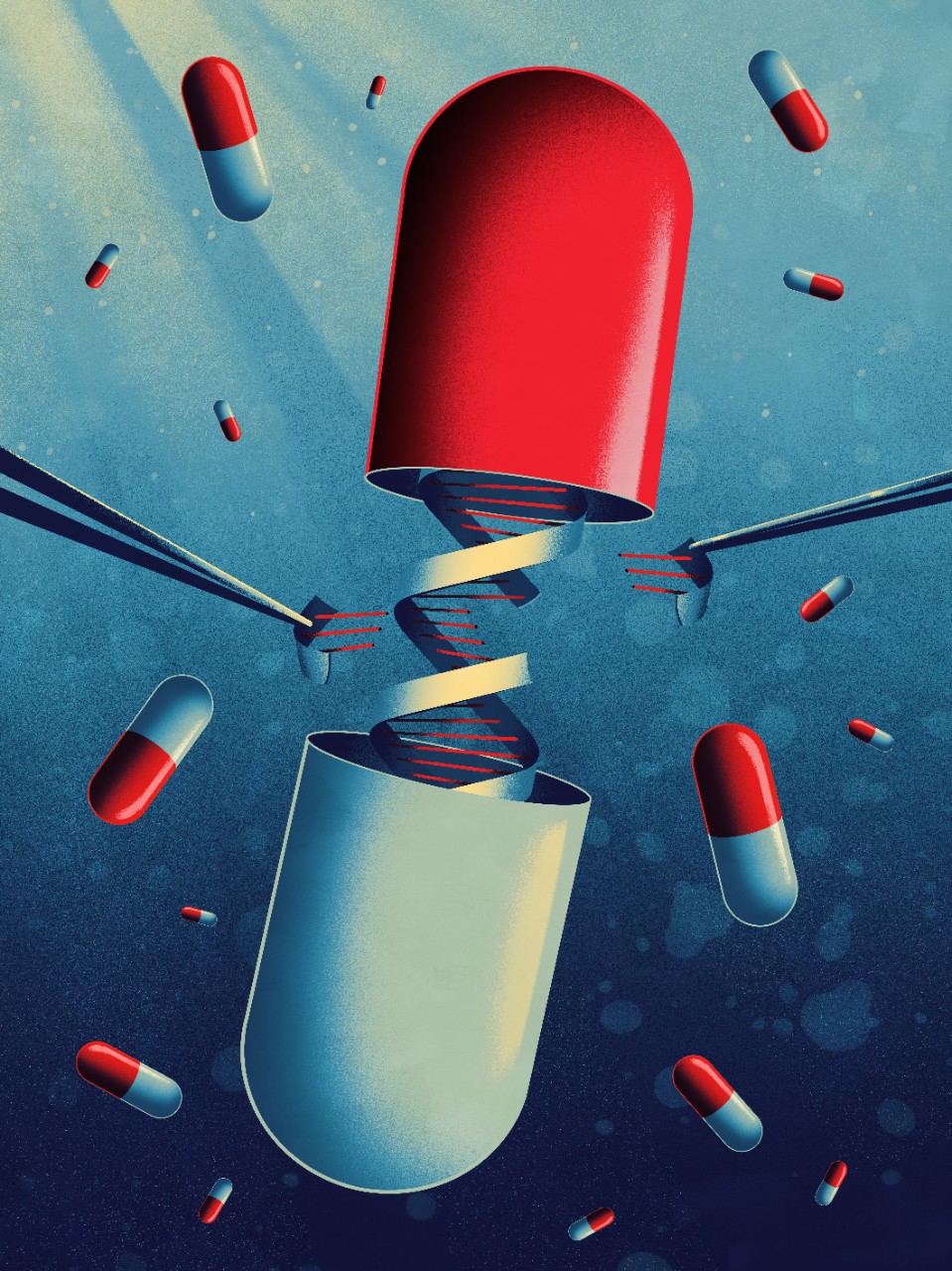From resensitizing bacteria to destroying them altogether, gene-editing offers new hope
Around 10 million. According to the World Economic Forum, that’s the number of lives we will be losing each year by 2050 as bacteria develop defenses against the drugs we use to fight infections.
Tackling antibiotic resistance, though, is hard.
“It is a complex phenomenon,” says Professor Jennifer Doudna, founder of the Innovative Genomics Institute. “It’s not a disease, it’s a biological property that emerges over time, so there’s no standard model to deal with it.”
A biotechnology pioneered by Doudna offers a possible solution. Doudna is the Nobel Prize–winning co-inventor of CRISPR gene editing, a technique that allows scientists to make targeted changes to the DNA sequences of all living cells.
The technique exploits the adaptive immune system found in bacteria that helps them recognize and fight viral infections. This immune system works by using enzymes to cleave and capture small pieces of the virus’ DNA, which the bacteria then store. The bacterium uses this record to create proteins that can identify the virus if it returns and snip its DNA accordingly to destroy it. CRISPR gene editing hacks this snipping process by asking it to cut DNA to order. Think of it like a precise pair of genetic scissors. Once a piece of genetic information has been cut out, new genetic information can be inserted in its place, making a specific gene edit.
Cheap and quick to use, it is opening up possibilities across everything from agriculture to medicine, where it promises to help cure hereditary diseases, blood disorders, and even cancers. Between 2019 and 2022, gene editing companies, most of which are startups, raised more than $5 billion in investment. In 2023, the FDA approved the first CRISPR-based medical treatment, and the wider market for CRISPR genome editing is expected to grow to $28.8 billion by 2030.

To understand how CRISPR could be used to tackle antibiotic resistance, we need to understand how that resistance arises in the first place. Like all living things, bacteria evolve in response to environmental pressures through natural selection. Faced with an effective antibiotic, advantageous mutations may include the ability to produce enzymes that neutralize the antibiotic, or the development of cell wall “pumps” to expel the antibiotic before it does any damage. Our heavy reliance on antibiotics accelerates this process. According to a 2021 study, global human antibiotic consumption went up 65 percent between 2000 and 2015.
The problem is exacerbated by improper use. When we take a course that is too short or too weak, for example, we expose bacteria to antibiotics without actually killing them off. The most resistant bacteria might survive, and they will grow and multiply, creating a strain of resistant bacteria that may spread.
Worse still, bacteria readily swap bits of DNA among related and unrelated species in a process known as horizontal gene transfer. This means they can pass their immunity on to other kinds of bacteria. This often happens via small circular DNA molecules known as plasmids, which pass between cells during physical contact.
New solutions such as those potentially unlocked by CRISPR would be extremely valuable. Scientists are examining two primary approaches.
“One general strategy that seems promising is targeting the genes or mutations that enable microbial resistance to antibiotics, making the antimicrobials that we already have more effective,” says Doudna. That’s vastly preferable to “constantly having to develop new ones in a never-ending arms race with bacteria.”
In May 2023, researchers targeted the resistance gene for Gentamicin, a common antibiotic, which reversed the resistance in infected cells and protected others from developing it. In theory, you can re-sensitize entire bacterial populations to antibiotics and stop the resistance genes from spreading. “Horizontal gene transfer is an important mechanism in spreading resistance,” says Doudna. “So it’s likely also the key to stopping its spread.”
The second general strategy is to target the bacteria directly. You can simply cut specific regions of its chromosome, by programming the CRISPR enzymes to target them, circumventing the need for antibiotics altogether. In 2021, scientists in Canada used this approach to eliminate a harmful bacterium from the gut.
Still, it may be years before CRISPR-based therapies can be used widely. One challenge is getting the mechanism inside all the bacterial cells that you wish to target, and doing so safely. We also need a better understanding of the specific genes that enable resistance to antibiotics, and to ensure that only those genes in the target bacteria are edited. A more fundamental step will simply be to show that these kinds of CRISPR therapies work not only in the lab, but in humans, and that itself will be a long road.
“This is a challenge that will be addressed over time, not solved all at once,” says Doudna. “We’ll see small victories before we win the battle.”

Is DNA the future of computer storage?
We’re producing more information than ever, and data centers are struggling to keep up. Nature’s original storage system may provide an answer…

Plastic-eating bacteria could revolutionize recycling
A new front is opening in the war on waste, but can it scale?

Could “augmented wood” be the future of construction?
It’s natural, it’s renewable—and potentially as strong as steel

Welcome to the golden era of rejuvenation science
Startups and academics are making notable progress in tackling the aging process. Will they succeed?

